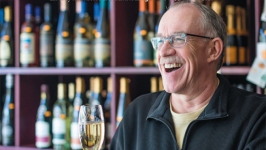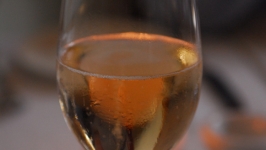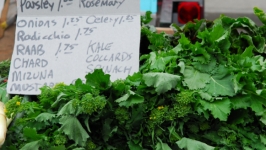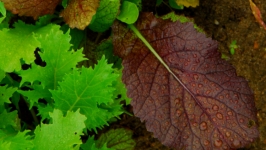The Wine Counselor Praises Michigan Wine
Michael Schafer rummages through the shelves at Woods Wholesale Wine on Mack Avenue in Grosse Pointe Woods, searching for the perfect wine to meet a customer’s request: a really great red, not too sweet, under $30. He quickly comes up with several options, just under and above the price point.
“But this one is really special,” he says, wiping the label on a dark bottle of Pinot Noir. “Is $30 a hard limit?” he asks with an impish smile.
After practicing law for more than 25 years, Schafer launched an encore career in 2010 to focus on his lifelong passion: wine. He’d been an enthusiast for most of his adult life, ever since attending the University of California at Santa Barbara in the 1970s.
“That’s where it really started. I thought to myself, ‘Wow, this stuff is really good,’” he recalls.
But his California wine romance was to be short-lived. Schafer was soon called back to Michigan to care for his father. It was the early 1970s, and Michigan’s wine industry was in its infancy. So he began to explore what the state had to offer and has maintained a front-row seat on the evolution of Michigan’s wine industry ever since.
Schafer points to 1974 as a pivotal year for Michigan’s wine industry. That was the year that Edward O’Keefe Jr. launched northern Michigan’s first commercial winery, Chateau Grand Traverse, on the Old Mission Peninsula. Two years later, Bernie Rink opened Boskydel Vineyard on the Leelanau Peninsula. Michigan’s modern wine industry was born.
Schafer notes, however, that Michigan’s wine history extends much further back in time. “It goes back to the 1800s in Monroe, Michigan,” says Schafer. “And then it moved out to the west side of the state, where it helped establish the fruit belt in the Paw Paw area.”
These days, Schafer plays off his career as an attorney dubbing himself “The Wine Counselor.” He spends his time teaching, lecturing and writing about wine and spirits and consults with local retailers like Woods Wholesale Wine. His professional motto is “I taste bad wines so you don’t have to.” He holds adjunct professorships at Baker College and the Culinary Institute of Michigan, teaches consumer wine classes at the Birmingham Community House and Grosse Pointe War Memorial and consults with anyone who wants to pair wine and food.
One of his main goals is to demystify wine for people.
“I hear the word ‘connoisseur’ a great deal,” he says. “People will say, ‘I like wine, but I’m not a connoisseur.’ To me, this is very frustrating. I don’t consider myself a connoisseur. I’m a counselor. You don’t have to like dry wines, you can enjoy sweet wines. That’s perfectly fine.”
And these days, according to Schafer, there’s a full array of Michigan wines to suit all palates. “Michigan wines have come so far, so fast,” he says. “In the last 20 years, the industry has matured, and we’re now making world-class wines that win awards all over the planet.”
Schafer credits the industry’s maturity to the ageing of Michigan’s vines. He likens the output of grapes on a vine to the output of a human being.
"Like humans, with vines there’s a life expectancy,” he says. “They start out young and immature, and don’t produce much. Then they mature and produce a lot. Then as they get older, like people, they get a little bit more gnarly, and don’t produce as much, but what they do produce is really flavorful.”
He says it’s the uniqueness of Michigan’s terroir—a French winemaking term with no direct English translation—that gives Michigan wines their special qualities. Michigan’s geography and climate, combined with pockets of nutrient-poor soil, are key to the state’s unique terroir.
“It means a sense of place—the ‘somewhere-ness’ of the grapes,” he says. “It’s the soil, the temperature, the proximity to water and amount of sunlight hours, which is critical for a wine.”
And that ‘somewhere-ness’ has led to the establishment of a significant wine industry in Michigan. Today, the state has over 100 operating wineries. Shafer advises those who want to explore the diversity of what the state has to offer to venture into the four American Viticultural Areas (AVAs) in the state.
For some of Michigan’s oldest wineries, visit the “fruit belt” area including the Fennville AVA in southwest Michigan, which is part of the larger Lake Michigan Shore AVA. Then head north to the newer wineries in the Leelanau Peninsula AVA and the Old Mission Peninsula AVA. Finally, explore some of the state’s newest wineries in the Upper Peninsula and the Thumb.
As for specific wineries in southeast Michigan, Schafer recommends Sandhill Crane, Domaine Berrien Cellars and Wyncroft. In southwest Michigan, he advises a visit to Karma Vista and Bella Luna. On the Leelanau Peninsula, he advises a trip to Boathouse Vineyards, Black Star Farms, Shady Lane Cellars and Blustone Vineyards, and on the Old Mission Peninsula, to Chateau Grand Traverse, Brys Estate and 2 Lads. He also advises checking out Michigan’s various wine trails.
“I can go on and on; there’s a lot of really great ones,” says Schafer. “It just depends on what kind of experience you are looking for—whether a bigger, fancier tasting room or something more simple.” And whatever it is you are looking for in wine, according to Schafer, now is the time to find it in Michigan.
Find out more at The Wine Counselor












